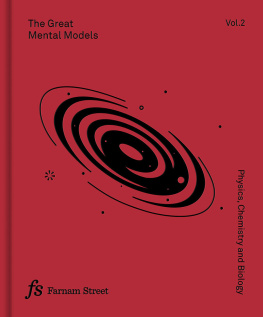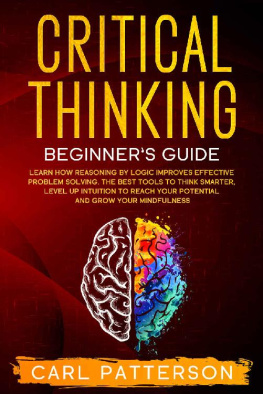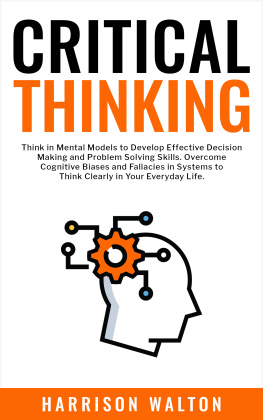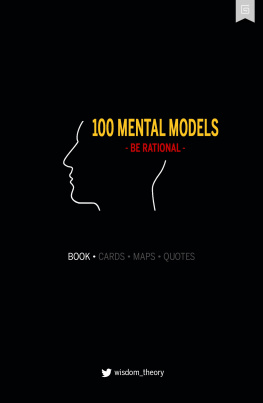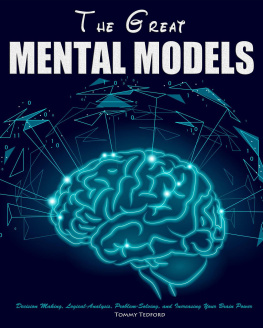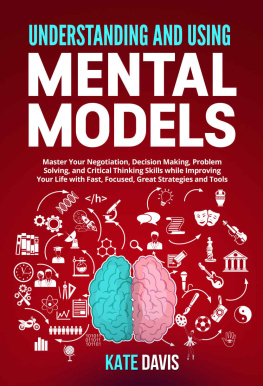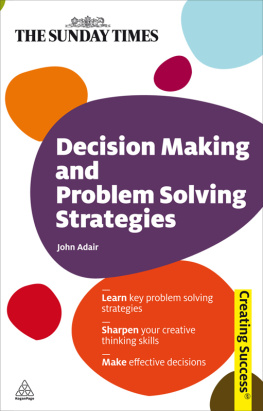Farnam Street is devoted to helping you develop an understanding of how the world really works, make better decisions, and live a better life. We address such topics as mental models, decision-making, learning, reading, and the art of living.
In a world full of noise, Farnam Street is a place where you can step back and think about time-tested ideas while asking yourself questions that lead to meaningful understanding. We cover ideas from science and the humanities that will not only expand your intellectual horizons but also help you connect ideas, think in multidisciplinary ways, and explore meaning.
Headquartered in Ottawa, Canada, and run by Shane Parrish, we operate around the globe and have helped millions of people master the best of what other people have already figured out.
fs.blog
The quality of your thinking depends on the models that are in your head.
This is a statement we strongly believe in at Farnam Street. This conviction drives much of what we do.
When you learn to see the world as it is, and not as you want it to be, everything changes. The solution to any problem becomes more apparent when you can view it through more than one lens. Youll be able to spot opportunities you couldnt see before, avoid costly mistakes that may be holding you back, and begin to make meaningful progress in your life.
Thats the power of mental models. And thats why we created the Great Mental Models project.
The Great Mental Models Project is a labor of love to help equalize opportunity in the world by making a high-quality, multidisciplinary, interconnected education free and available to everyone.
Along with the books, were developing additional tools and resources to help readers more readily connect the models in their heads, so their use becomes second nature. By purchasing this book, you make it possible for us to continue our efforts and see this initiative through to completion. Thank you for your support. If youd like to learn more about the Great Mental Models project, please visit FS.blog/tgmm
Published in 2019 by Latticework Publishing
PO Box 14037, RPO Glebe, Ottawa, ON K1S 3T2
Copyright Farnam Street Media Inc.
Creative Direction by Morgwn Rimel
Designed and typeset by FLOK, Berlin
Illustrations by Marcia Mihotich, London
Printed in Latvia by Livonia Print
Ebook by Bright Wing Books
All rights reserved.
A portion of this work has appeared online at fs.blog.
While every effort has been made to contact copyright holders, if we have overlooked anything please let us know. This book wouldnt be possible without the insights of others. The goal of FS is to master the best of what other people have figured out. True to this mission, everything in here began with someone else.
Any reproduction of this book requires written permission.
www.fs.blog
Book ISBN: 978-1-9994490-3-2
Ebook ISBN: 978-1-9994490-4-9
Contents
Landmarks
Introduction
The world is beautiful, fascinating, and full of curiosities, but it doesnt have to be completely mysterious. Humans may not know everything about the world, and indeed it often feels like we have just scratched the surface, but we have figured out some fundamentals about how everything on this planet operates. It is those fundamentals that make up Farnam Streets latticework of mental models, a way of approaching new ideas and situations, problems and challenges with a toolkit of valuable knowledge.
In Volume 1 of The Great Mental Models, we introduced nine general thinking concepts to get you started on the journey of building a latticework of timeless knowledge. Those models had broad applicability, and we hope you were inspired and excited to apply them to achieve better results with fewer problems as you tackled both opportunities and challenges in your life.
In Volume 2 of The Great Mental Models, we continue the journey and explore fundamental ideas from physics, chemistry, and biology. These disciplines offer an exceptional amount of insight that we can apply across all areas of our lives to improve our careers, our relationships, and ourselves.
The truths about the physical world, from the forces that allow us to manipulate energy to the behaviors that drive the actions of all organisms, are constants that can guide our choices.
In Storm in a Teacup: The Physics of Everyday Life, Helen Czerski tells the story of the Fram, a boat designed to work with nature instead of against it. Nansen did not try to improve on the design of existing boats. Instead, he let the reality of ice expansion determine the design of his ship.
The Fram floated across the Arctic Ocean for the next three years, not quite making it to the pole, but collecting reams of valuable scientific data. She got closer to the pole than any ship previously and provided conclusive evidence that the Arctic was an ocean. All of this success was due to trying to answer one question, How can I work with the world, not against it? As Czerski concludes, Instead of fighting the inexorable expansion of the ice, [the Fram] had used it to ride across the top of the world.
Taking action that works with the world is more effective, less stressful, and ultimately more rewarding. We dont waste our time fighting to accomplish the impossible.
About the series
The Great Mental Models series is designed to inspire and challenge you. We want to give you both knowledge and a framework for making it useful.
One of our goals for the series is to provide you with a set of tools built on timeless knowledge that you can use again and again to make better decisions. We will present over a hundred mental models, spread across five volumes, that define and explore the foundational concepts from a variety of disciplines. We then take the concept out of its original discipline and show you how you can apply it in nonintuitive situations. We encourage you to dive into new ideas to augment your knowledge toolbox, but also to leverage what you already know by applying it in new ways, to give yourself a different perspective on the challenges you face. In the first book, we explained that a mental model is simply a representation of how something works. We use models to retain knowledge and simplify how we understand the world. We cant relearn everything every day, and so we construct models to help us chunk patterns and navigate our world more efficiently. Farnam Streets mental models are reliable principles that you can see at work in the world time and again. Using them means synthesizing across disciplines, and not being afraid to apply knowledge from different areas far outside the milieu they usually cover.
Not every model applies to all situations. Part of building a latticework of mental models is about educating yourself regarding which situations are best addressed by which models. This takes some work and is not without error. Its important to constantly reflect on your use of models. If something didnt work, you need to try to discover why. Over time, by reflecting on your use of individual models, you will learn which models will best help you tackle which situations. Knowing why a model works will help you know when to use it again.

